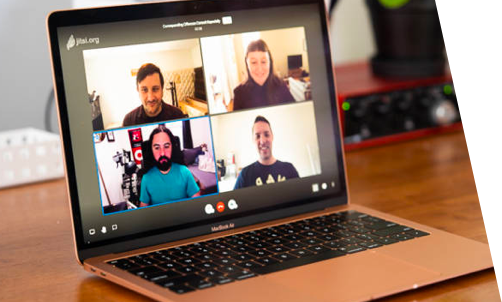You prepared well, rehearsed well, and you delivered your presentation well. The facilitator invites questions from the audience. Now, you are feeling a little out of your comfort zone. What if I get asked about something I have not anticipated or get a question to which I don’t know the answer?
If you can handle this part of the presentation with confidence and sure-footedness, you will enhance your message and come across as someone on top of your subject. Failure to manage this vital presentation section could undermine all your excellent work. You will look ill-prepared.
The Q&A is, therefore, an essential part of your presentation. It allows the audience to seek clarity or respectfully challenge. Above all, it is an opportunity for them to engage with your message actively, and you should welcome that.
Here are some tips that might help you prepare for your next interactive presentation.
Go further with your rehearsal:
It seems obvious, but the role of rehearsal serves a greater purpose than just refining your delivery. Rehearsing to colleagues or friends is an opportunity to go further. Invite them to play devil’s advocate as they listen to your message. Ask them to challenge you on your presentation assumptions or identify points needing more clarity. Thorough interrogation of your content and anticipating possible questions is next-level preparation.
Encourage Audience Interaction:
Creating an engaging atmosphere throughout your presentation involves more than just the Q&A session. Encourage audience participation at the outset, depending on the purpose or the environment. Actively involving your audience from the beginning sets the stage for a dynamic and participative experience. Use interactive techniques such as a show of hands or rhetorical questions, even pausing to check for understanding.
Consider embracing technology as an engagement tool:
Increasingly, presenters are using technology to facilitate real-time interactions. Apps such as Mentimeter or Slido enable audience members to submit questions or participate in polls using their devices. It creates a new and highly interactive method of engagement, especially for tech-savvy audiences. It also modernises your presentation. Technology options are particularly beneficial when presenting to very large audiences.
Stay calm and composed:
Unexpected or challenging questions may arise. Stay calm, composed, and confident. If you don't know the answer, it's okay to admit it. Promise that you will follow up later and do so. It will place you as someone who is honest and displays transparency.
Validate questions positively:
Embrace each question as an opportunity. Using phrases like "That's an interesting angle" or "I'm glad you asked that" validates the questioner and encourages others to share their thoughts and queries.
Use the TRACT method to frame your answers:
The first step is to Thank the person for asking the question. It acknowledges their contribution to the conversation.
Then, you Repeat or rephrase the question. It allows the rest of the audience to hear the question while giving you time to think of an answer.
Answer the question briefly and clearly.
Confirm that the questioner is happy with your response.
Finally, Thank the questioner again to show appreciation. Express gratitude once more. This dual expression emphasises your gratitude and positively summarises your response.
In summary, think of Q&As as an integral and critical part of your presentation. Asking questions demonstrates that your audience is interested in what you have to say. Encourage their curiosity. View Q&As as an opportunity to engage and provide additional clarity to ensure your message is understood. With a little preparation and adopting the right approach, you will come across a knowledgeable and confident presenter.

